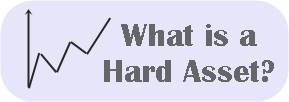
Table of Contents
Asset-Based Approach
A method of business valuation that emphasises a company's net asset worth is known as an asset-based approach. Subtracting total liabilities from total assets gives the Net Asset Value. When determining which of the firm's assets and liabilities to include in the valuation and how to calculate their respective values, there is some latitude for interpretation.
How to use an Asset-Based Approach?
Financial executives are critical in determining and upholding a company's worth. When a company's value rises, stakeholders' and investors' returns rise, and vice versa. There are various methods for determining a company's value. The Enterprise Value and equity value are two of the most popular. Additionally, the asset-based strategy can be utilized independently of these two techniques or in combination. The use of the equity in the computation is necessary for both equity value and enterprise value. Analysts substitute the asset-based valuation method if a company lacks equity.
- The asset-based value is calculated by numerous stakeholders and extensively utilized in valuation comparisons
- In some forms of study, private corporations may also be compelled to use the asset-based valuation as additional due diligence
- When a business plans a sale or liquidation, the asset-based valuation may also be crucial
Talk to our investment specialist
What is the Process of an Asset-Based Approach?
A firm can preserve its worth in several ways, including equity and enterprise value. Equity unites these two; an asset-based approach is used to determine value in the absence of equity. Private enterprises and stakeholders can both employ assets-based value in some analyses and company valuation comparisons.
Benefits of Asset-Based Approach
Here are the benefits of choosing an asset-based approach:
- It is the method of choice in crucial settings like liquidation and M&A
- It uses straightforward mathematical formulas
Cons of Asset-Based Approach
Here are the cons of using an asset-based approach:
- Numerous assets do not indicate that a corporation will be profitable
- The overall procedure is complicated and requires careful attention to detail to value intangible assets
- The process doesn't take the company's Earnings into account
- It needs to be revalued to determine its Fair Market Value
Asset-Based Approach Example
An analyst begins this valuation process with an audited Balance Sheet to calculate the value. The valuation assignment Standard of Value will be used to evaluate all entity assets and liability accounts. The analyst locates and capitalizes each entity's assets and liabilities to create a revalued balance sheet. This procedure encompasses the assets and liabilities that have previously been and those that have not yet been documented on the company's balance sheet.
Considering the values in the balance sheet's revaluation following fair Market value:
- Assets totalling - Rs. 107 billion
- Liabilities totalling - Rs. 60 billion
Value = Total assets - total liabilities = Rs. 107 – Rs. 60 = Rs. 47 billion
Let's consider another asset-based valuation example. Suppose the Book Value of the assets is Rs. 50,000. The matching sum is calculated by adding the fair market value of each asset in the asset list, which comes to Rs. 76,000. Intangible assets have a fair market value of Rs. 10,000. Therefore, the total asset value is Rs. 86,000. Current and long-term liabilities have a fair market value or book value of Rs. 33,000. Add Rs. 7,000 as the value of contingent liabilities in the following step, totalling Rs. 40,000 in liabilities. Finally, Rs. 46,000 worth of owner equity is obtained by subtracting liabilities from assets.
Net Assets' Adjustments
Adjusting net assets is among the most challenging aspects of creating an asset-based valuation. Its goal is to identify the market worth of assets in the current environment. Depreciation is used in balance sheet appraisals to reduce the value of assets over time. As a result, an asset's book value may not always be the same as its fair market value.
Conclusion
Some intangibles that are either not fully or even partially valued on the balance sheet may be considered for net asset adjustments. However, these intangibles are crucial to consider since an adjusted asset-based method examines the prospective sale price of a company in the current market. Liabilities can also be adjusted in a calculation of adjusted net assets. Market value adjustments could raise or lower the value of liabilities, which directly impacts how adjusted net assets are determined.
All efforts have been made to ensure the information provided here is accurate. However, no guarantees are made regarding correctness of data. Please verify with scheme information document before making any investment.












